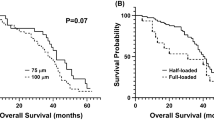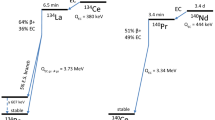Abstract
Cytotoxic microspheres have been developed for intra-arterial use in patients with liver metastases. Following injection, the distribution of microspheres reflects the pattern of hepatic arterial blood-flow. Vasoactive agents, such as angiotensin II, by producing vasoconstriction in normal liver, might divert arterial blood toward tumour and thereby enhance the delivery of drug-loaded particles. Using a double isotope technique, the distribution of radiolabelled microspheres to tumour and normal liver tissue was measured before and after angiotensin II infusion in nine patients with multiple liver metastases. The median increase in tumour: normal ratio following angiotensin II infusion was by a factor of 2.8 (range 0.8-11.7, P less than 0.05). This novel approach to regional chemotherapy, using a combination of angiotensin II infusion and cytotoxic microspheres, increases the exposure of tumour to cytotoxic agents and may, therefore, enhance tumour response rates.
This is a preview of subscription content, access via your institution
Access options
Subscribe to this journal
Receive 24 print issues and online access
$259.00 per year
only $10.79 per issue
Buy this article
- Purchase on Springer Link
- Instant access to full article PDF
Prices may be subject to local taxes which are calculated during checkout
Similar content being viewed by others
Author information
Authors and Affiliations
Rights and permissions
About this article
Cite this article
Goldberg, J., Murray, T., Kerr, D. et al. The use of angiotensin II as a potential method of targeting cytotoxic microspheres in patients with intrahepatic tumour. Br J Cancer 63, 308–310 (1991). https://doi.org/10.1038/bjc.1991.71
Issue Date:
DOI: https://doi.org/10.1038/bjc.1991.71



